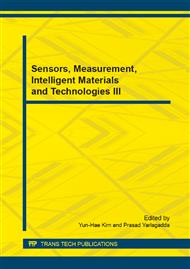p.1101
p.1105
p.1111
p.1115
p.1119
p.1123
p.1129
p.1133
p.1137
A Mobile Coverage Strategy for Sparse Overlay Network
Abstract:
For sparse overlay network built by static sensor nodes, this paper proposes the introduction of heterogeneous mobile sensor nodes, and designs a mobile coverage strategy to optimize the coverage performance of sensor network. At first, the monitoring area is divided into several sub-regions by iterative quartering and the sub-regions are represented by a quad-tree structure. Secondly, the mobile coverage strategy is planned based on the idea of divide and conquers and combing the overall regional strategy with local regional strategy. The overall regional mobile strategy is planned by go through all sub-regions according to breadth-first traversal of the quad-tree. The local regional mobile strategy in each sub-region is designed based on the distribution of static nodes after the sub-region meshing. The results show that the mobile coverage strategy can achieve good network coverage, and it is very suitable for multiple mobile nodes.
Info:
Periodical:
Pages:
1119-1122
Citation:
Online since:
March 2015
Authors:
Keywords:
Price:
Сopyright:
© 2015 Trans Tech Publications Ltd. All Rights Reserved
Share:
Citation:


